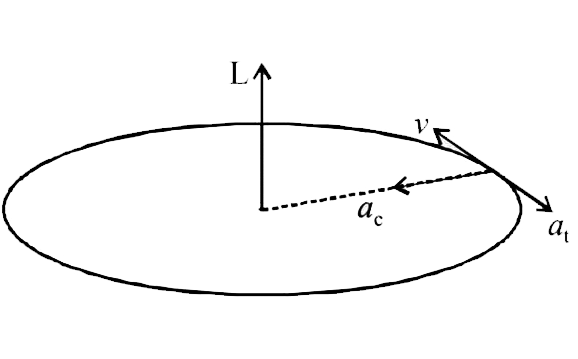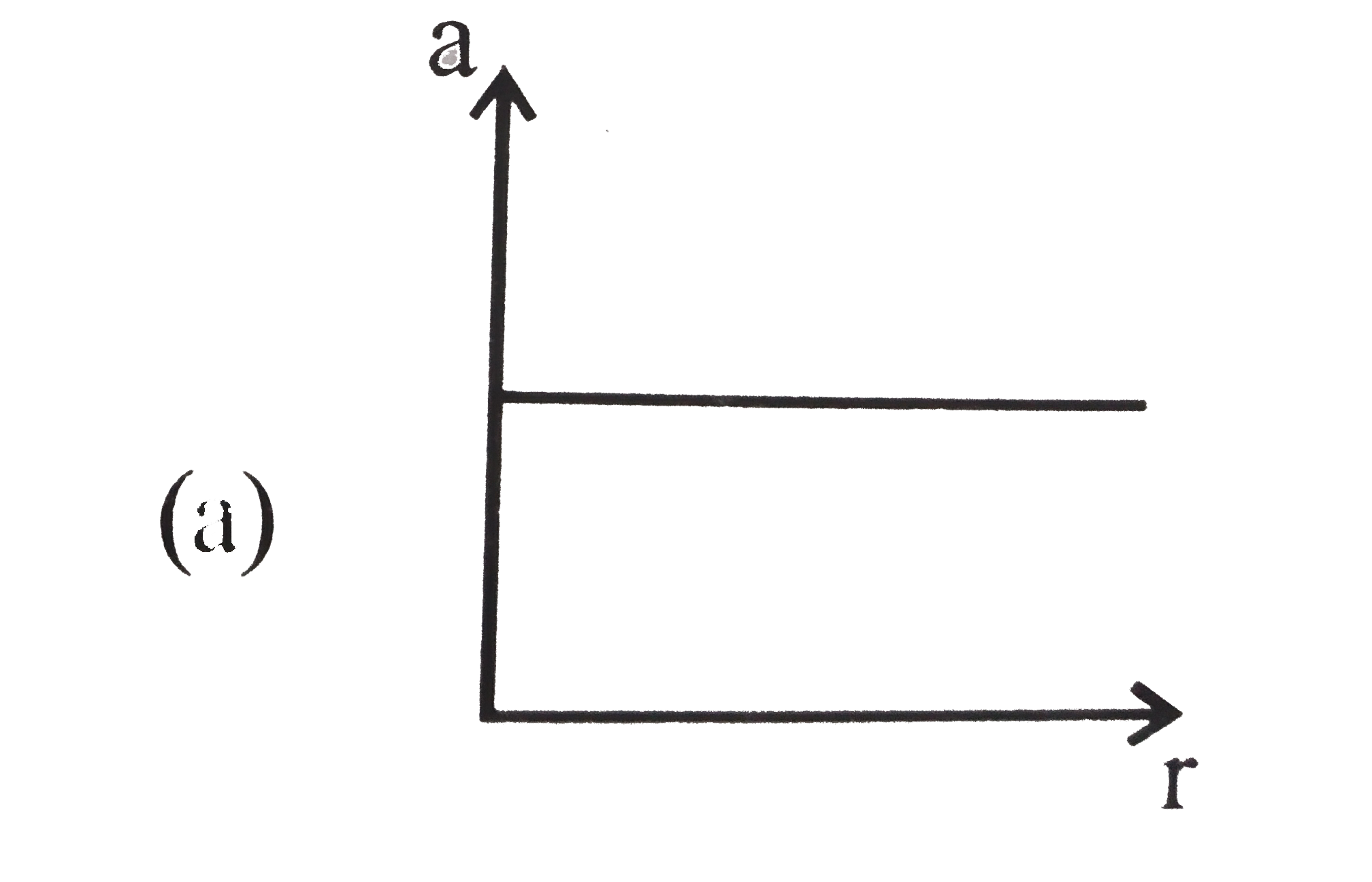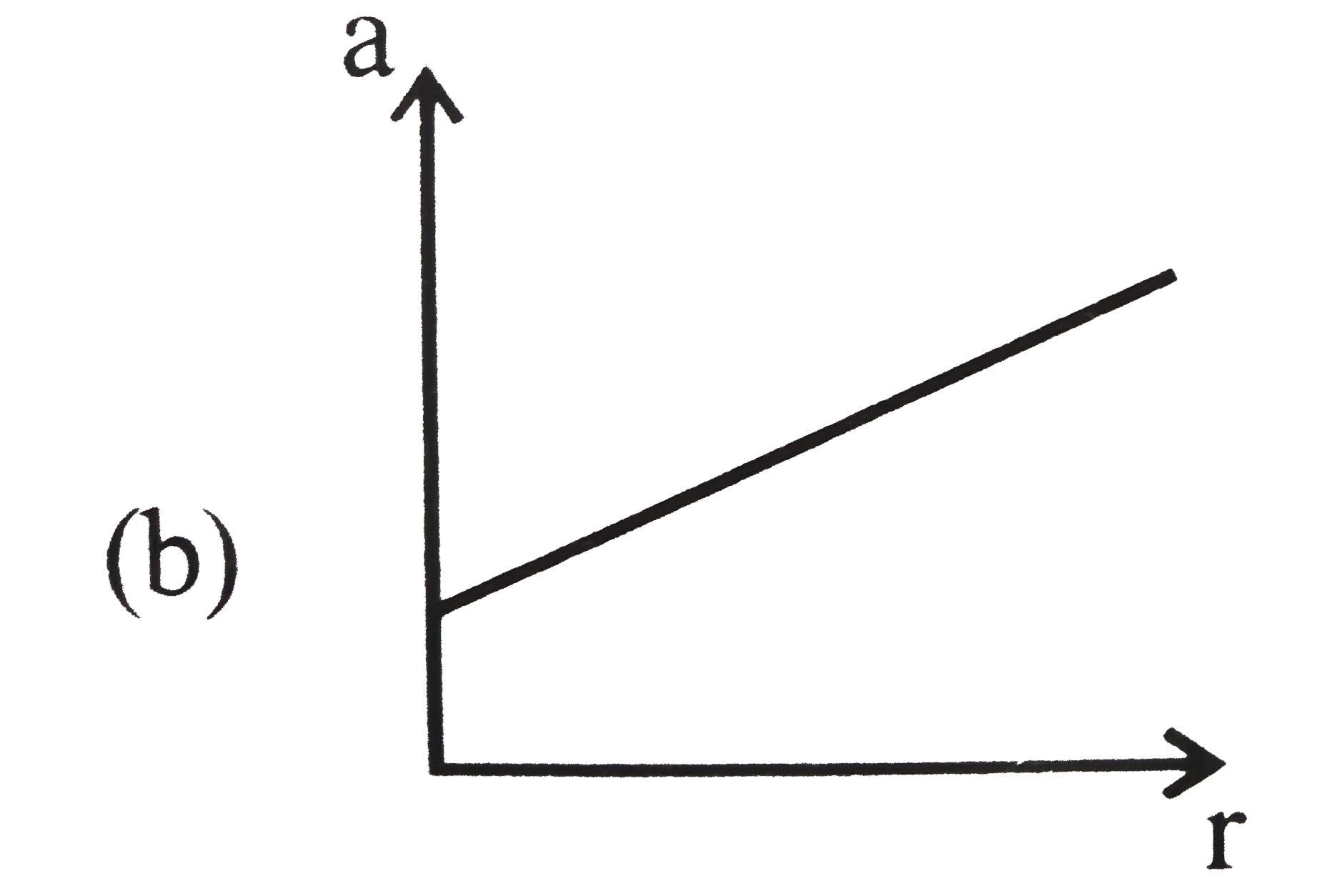A particle is confined to rotate in a circular path decreasing linear speed, then which of the following is correct?
A
→L(angular momentum) is conserved about the centre
B
only direction of angular momentum →L is conserved
C
it spirals towards the centre
D
its acceleration is towards the centre.
Video Solution
Text Solution
The correct Answer is:B
(b) Since v is changing (decreasing), L is not conserved in
magnitude. Since it is given that a particle is confined
to rotate in a circular path, it cannot have spiral path.
Since the particle has two accelerations acandat
therefore the net acceleraton is not towards the centre.

The direction of →L remains same even when the speed
decteases..
|
Topper's Solved these Questions
- ROTATIONAL MOTIONBook:SUNIL BATRA (41 YEARS IITJEE PHYSICS)Chapter:ROTATIONAL MOTIONExercise:MCQs with one correct answer
Explore 1 Video
- MOTIONBook:SUNIL BATRA (41 YEARS IITJEE PHYSICS)Chapter:MOTIONExercise:JEE Main And Advanced
Explore 63 Videos
- SIMPLE HARMONIC MOTIONBook:SUNIL BATRA (41 YEARS IITJEE PHYSICS)Chapter:SIMPLE HARMONIC MOTIONExercise:JEE Main And Advanced
Explore 69 Videos
Similar Questions
Knowledge Check
A particle moves in circular path with decreasing speed. Which of the following is correct.
A→L is constantBonly direction of →L is constantCacceleration →a is towards the centreDit will move in a spiral and finally reach the centreA particle is made to move in circular path with decreasing speed. Which of the following is correct ?
AAngular momentum is constantBOnly the direction of →L is constantCAcceleration is always directed towards the centreDParticle moves in helical path.A particle is moving in a circular path ofradius rat a constant speed v. Which one of the following graphs correctly represents its acceleration a?
A B
B C
C D
D
If a particle is moving along a circular path with constant speed, then Its motion is
View SolutionAn electron of charge e and mas m is moving in a circular path of radius r with a unifrom angular speed ω . Then which of the following statementa are correct?
View SolutionA particle moves in a circular path with decreasing speed . Choose the correct statement.
View SolutionA particle is moving on a circular path with constant speed, then its acceleration will be
View SolutionA particle is moving along a circular path. Which of the following statement is not correct?
View Solution

